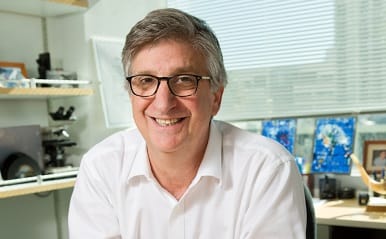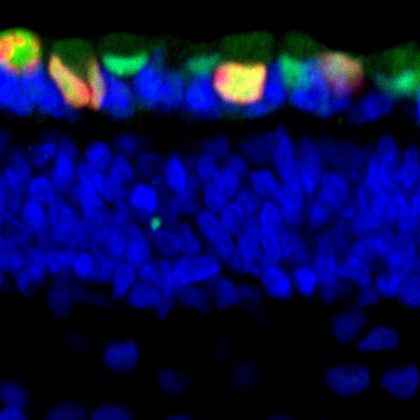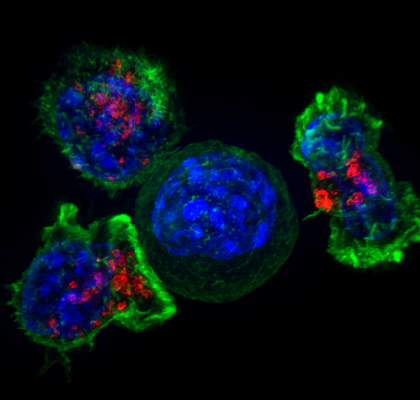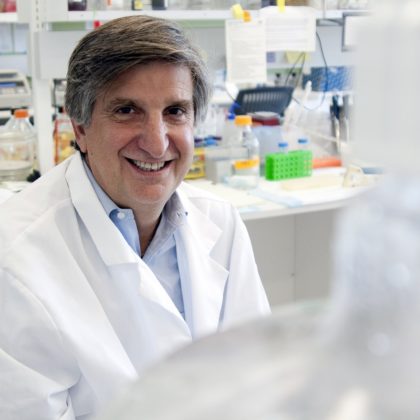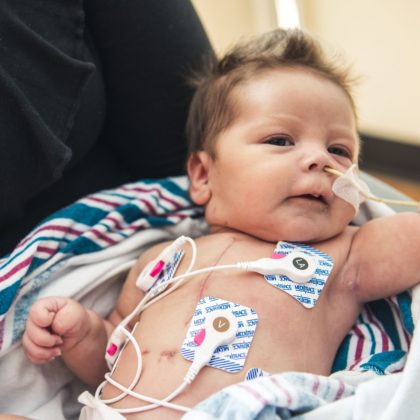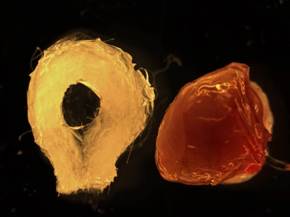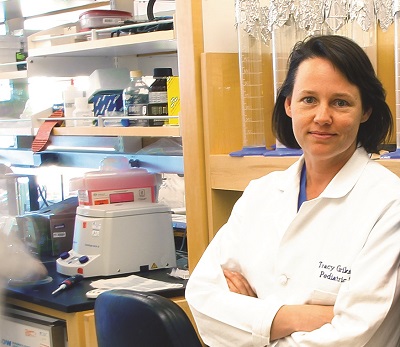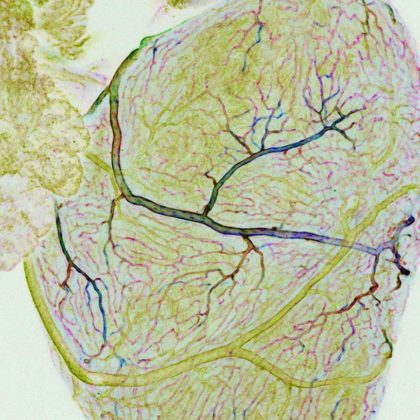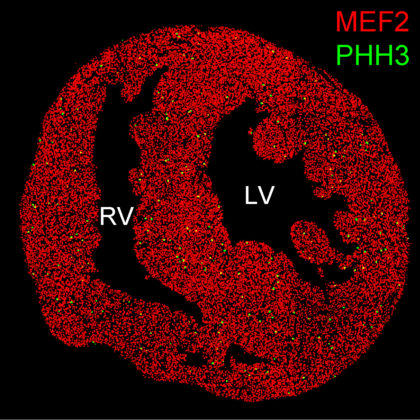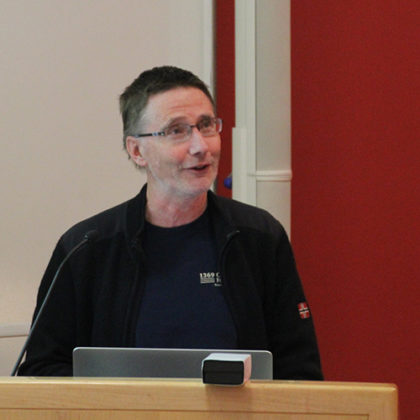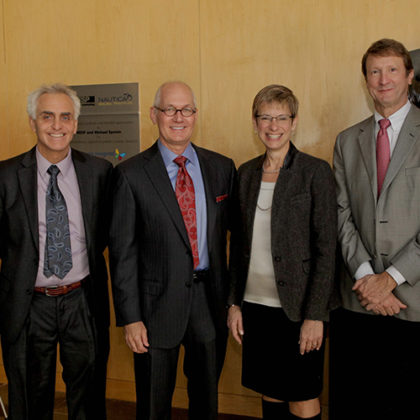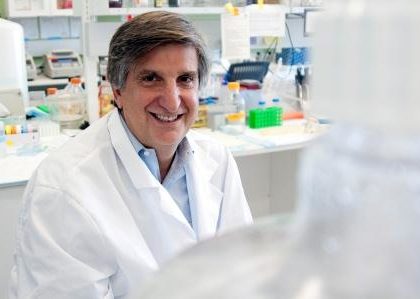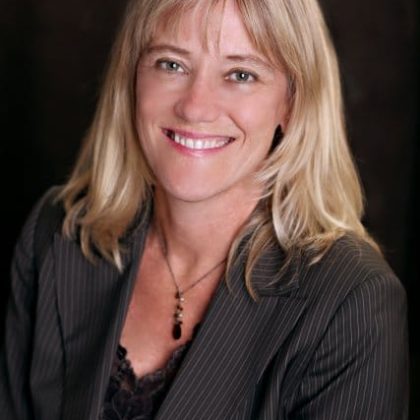Stories
Neural development of 2-month-old infants shows effect of maternal stress
Story courtesy of Children’s Hospital Los Angeles A study of 70 mothers and their infants suggests that the impact of maternal stress on neurodevelopment is detectable by electroencephalography (EEG) at 2 months …
CHLA team identifies developmental stage for eye tumor in children
Investigators at Children’s Hospital Los Angeles have been able to pinpoint the exact stage of development of the human retina, when cells can grow out of control and form cancer-like masses. The …
Common psychiatric disorders share an overlapping genetic risk
Investigators found that many common psychiatric disorders are deeply connected on a genetic level, sharing specific genetic risk factors, underscoring the need to recognize shared dimensions of brain dysfunction, and develop new …
CHLA joins CureWorks collaborative to accelerate development of immunotherapy treatments for childhood cancers
Seattle Children’s, with participating members Children’s Hospital Los Angeles, Children’s National Health System and BC Children’s Hospital, has launched CureWorks, an international collaborative of leading academic children’s hospitals determined to accelerate the …
Patt Levitt named inaugural Chief Scientific Officer at CHLA
Pat Levitt, PhD, has been named Vice President, Chief Scientific Officer and Director of The Saban Research Institute of Children’s Hospital Los Angeles.
Children’s Hospital Los Angeles joins national consortium to study use of stem cells in treating a rare cardiac defect
Children’s Hospital Los Angeles is announcing participation in the first-ever clinical trial using stem cells from umbilical cord blood to delay or even prevent heart failure in children born with a rare …
Functional human tissue-engineered liver generated from stem and progenitor cells
A research team led by investigators at The Saban Research Institute of Children’s Hospital Los Angeles has generated functional human and mouse tissue-engineered liver from adult stem and progenitor cells. Tissue-engineered Liver …
Stem cell researcher Tracy Grikscheit awarded $7.1 million by CIRM
Tracy C. Grikscheit, a principal investigator with USC Stem Cell and The Saban Research Institute of Children’s Hospital Los Angeles, has received a $7.1 million grant from the California Institute for Regenerative …
Zebrafish provide a novel model to study short bowel syndrome
USC Stem Cell investigators at Children’s Hospital Los Angeles (CHLA) are providing new hope for babies with short bowel syndrome (SBS) by developing a novel model of SBS in zebrafish, described in …
Tiny heart, big promise
The heart has its own dedicated blood supply, with coronary arteries that supply oxygen-rich blood to the heart and cardiac veins that remove deoxygenated blood. This system of vessels nourishes the heart, …
Mammalian heart regenerative capacity depends on severity of injury
A new study by researchers at Children’s Hospital Los Angeles (CHLA) has shown that neonatal mouse hearts have varying regenerative capacities depending upon the severity of injury. Using cryoinjury — damaging the …
Stem cells prove their potency at CHLA annual symposium
The Saban Research Institute of Children’s Hospital Los Angeles Annual Symposium, held on Feb. 21, focused on the promise of regenerative medicine and cellular therapies — from curing HIV to building organs …
USC and Children’s Hospital Los Angeles launch imaging lab for translational research
With the launch of the Translational Biomedical Imaging Lab (TBIL), investigators at the University of Southern California (USC) and The Saban Research Institute of Children’s Hospital Los Angeles moved us closer to a …
Pat Levitt elected to Institute of Medicine
Pat Levitt, provost professor of pediatrics, neuroscience, psychiatry, psychology and pharmacy at the Keck School of Medicine of USC, was recently elected as a member into the prestigious Institute of Medicine (IOM), …
Magnetic treatment for high-risk neuroblastoma proves less than attractive
Removing tumor cells with a magnet? It may sound strange, but researchers at Children’s Hospital Los Angeles (CHLA) and their colleagues recently explored whether this technique can create better outcomes for patients …
